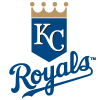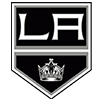Quarterbacks might not always be the centerpiece of fantasy football trades in 1-QB leagues, but in superflex and 2-QB formats, their value skyrockets. Even in standard leagues, acquiring the right QB can be the difference between winning and losing key matchups.
The challenge? Not all QB stats are created equal. Some numbers — like raw passing yards — can be misleading, while others give you clear insight into a QB's rest-of-season potential. That's why you should consider these key metrics as well as use the fantasy football trade analyzer at RotoWire before making your move. You get access to that tool and much more, including expert analysis throughout the season with a subscription to RotoWire.
11 Key Metrics To Consider When Trading for Quarterbacks
- Passing Yards Per Game – Measures the average yardage a QB produces through the air each week. High passing yardage not only boosts scoring in fantasy football directly but also indicates that the quarterback is involved in a productive offense, often leading to more opportunities for touchdowns.
- Passing Touchdowns Per Game – Tracks how many passing scores a QB averages each game. Consistent touchdown production is a direct driver of fantasy points and often signals that the offense is efficient in the red zone and capable of sustaining drives.
- Completion Percentage – The percentage of passes a QB successfully completes. This is a strong measure of accuracy and decision-making, with higher numbers typically reflecting good chemistry with receivers and the ability to keep drives alive.
- Yards Per Attempt (YPA) – Calculates the average yards gained for every pass attempt. A higher YPA means the QB is effectively stretching the field, balancing safe short throws with explosive downfield plays, which can lead to bigger fantasy outputs.
- Pass Attempts Per Game – Shows how often a QB is throwing the football. High passing volume can compensate for mediocre efficiency and still lead to top-tier fantasy numbers, especially in pass-heavy offensive schemes.
- Rushing Yards Per Game – Mobile quarterbacks have a significant fantasy advantage because rushing yards add a stable scoring floor. Even if passing numbers are modest, consistent ground production can keep a QB valuable in trades.
- Rushing Touchdowns – A QB who regularly scores on the ground, particularly in goal-line situations, offers bonus points that can make them a game-changer in fantasy matchups. This can be especially valuable in tight contests.
- Red Zone Passing Attempts – Tracks how many passes a QB throws inside the opponent's 20-yard line. High red zone volume usually correlates with more passing touchdowns and is a sign that the QB is trusted in scoring situations.
- Turnovers (Interceptions & Fumbles) – Negative plays that directly cost fantasy points and often signal inconsistent performance. A high turnover rate is a red flag, especially in leagues with steep penalties for mistakes.
- Strength of Schedule – Evaluates the quality of upcoming defenses the QB will face. Favorable matchups against weaker pass defenses can lead to surges in production, while a gauntlet of tough defenses could limit upside.
- Durability – The NFL has gone out of its way to protect quarterbacks, but this is still a position that gets hit with its share of injuries. Finding a quarterback with a strong durability track record can greatly reduce the amount of time you need to spend rostering quarterbacks.
How to Apply These Metrics to Trade Decisions
Here are some ways that you can use these metrics to assist in your QB trade decisions.
Consider the pros of rostering one QB. One of the things that these metrics illustrate is how many production paths QBs have. That's why it is now commonplace for QBs to score 280+ points in a season. This can allow you to peruse the fantasy football rankings to find a quality starter and then wait to make a low-cost trade during the season.
Look for dual threat quarterbacks when making trades. Keep in mind that dual threat here doesn't mean a rush-heavy QB, but rather one who can add a solid amount of rush points every week. If a QB can post 3-5 points on the ground, it only takes a decent passing day for that QB to turn into a high-floor backup. If you review the custom fantasy football rankings at RotoWire every week, you can often find these dual threat quarterbacks sitting on benches of teams that need help at some other position.
Never have more than one injury question mark at quarterback. It's understandable to have an injury question mark quarterback on your roster, but you should never have two. It's just too much of a risk at the highest scoring position in fantasy football. Be sure to study the NFL player news for updates to limit your injury uncertainty here and to target more reliable backup trade options on other squads.
When in doubt, go for the quarterback with the highest YPA. Yards per attempt has been one of the most effective tools for measuring quarterback performance since the advent of the forward pass over a century ago.
Be relentless in targeting favorable matchups. Treat QB much like you do D/STs when it comes to targeting favorable matchups. This is especially true as the season progresses, because defensive backfields tend to get obliterated by injury as November and December roll around. You can use RotoWire as your weekly fantasy football cheat sheet in this area and thus identify those defenses to target. Once you do that, it's just a matter of perusing the rosters in your fantasy league to see which manager you should be targeting for a trade offer.
A lot of fantasy managers tend to overlook trade options at quarterback because there is so much quality depth at this position. Taking this approach places an unnecessary limitation on your roster building. If you instead take the approach that this is the highest scoring position in fantasy football and that you should be maximizing its value as often as possible, you should be able to make trades that augment your team's won-loss bottom line.



























